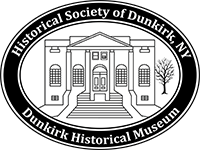DeWitt Clinton (1769-1828) was a politician who served New York State as state senator, US Senator, mayor of New York City, lieutenant governor, sixth governor of the state, as well as unsuccessful presidential candidate in 1812. He was a strong proponent of the Erie Canal, serving as canal commissioner, with its opponents referring to it as “Clinton’s Ditch.” Clinton was also a naturalist who was very interested in the world of nature and science. Clinton wrote a book entitled Natural History and Resources of New York, and sent a copy to Thomas Jefferson, who in turn sent Clinton a note on December12, 1822, that started by saying, “I thank you dearly for the little volume sent me on the Natural History and Resources of N York [sic]. It is an instructive, interesting and agreeably written account of the Riches of a Country to which your great Canal gives value and issue, and of the wealth which it created from what without it would have had no Value.” In the book Clinton analyzed New York’s natural wealth and described geological details of the state, and included reports of until then undocumented plant, bird, and fish species in New York.
After being elected governor of the state in 1817, he began his push to build the Erie Canal, and he looked to the area that became Dunkirk favorably as one in which he might invest. He made large investments in its real estate, perhaps thinking the canal might end at its harbor, a harbor considered to be one of the best on the lake.
Clinton and others considered Dunkirk’s harbor at the western end of the state as the one most favorable to be the terminal point of the canal. Daniel G. Garsney, who first visited the county in 1811, probably was the man most responsible for calling the attention of Governor Clinton and his friends to Dunkirk’s harbor. Garnsey was Chautauqua County’s first District Attorney and first member of Congress chosen from the county. In 1816 or 1817 he served as agent for Elisha Jenkins and purchased one thousand acres from the Holland Land Company for him. Jenkins served as trustee for the Dunkirk Land Company, a group composed of Isiah and John Townsend, De Witt Clinton. and Mr. Thorn. It was this Elisha Jenkins, a shipping merchant, who was for a time employed by a shipping firm in Dunkerque, France, and who thought the harbors of both cities resembled each other. He suggested the village on Lake Erie be given the same name, which occurred in 1818.
In the meantime, a proposed layout of streets around the harbor was made, and Clinton took it upon himself to name the streets. Numbered streets ran east to west, including Second through Sixth Streets. He named streets west of Center Street (now Central Avenue) after birds and streets east of Central after animals, making use of his interest and knowledge in the world of nature in doing so.
